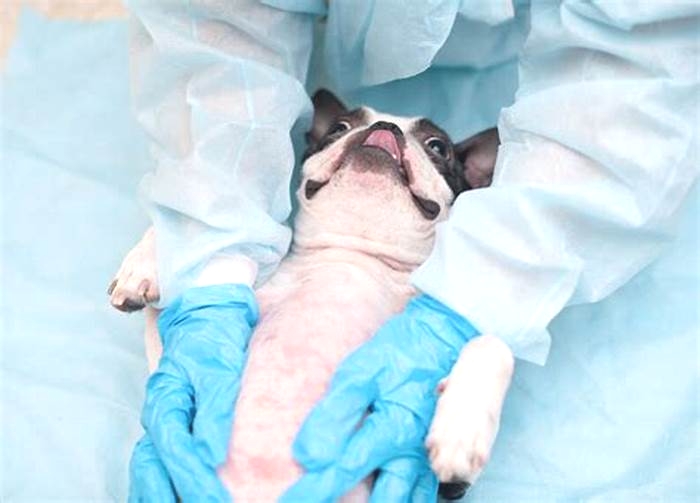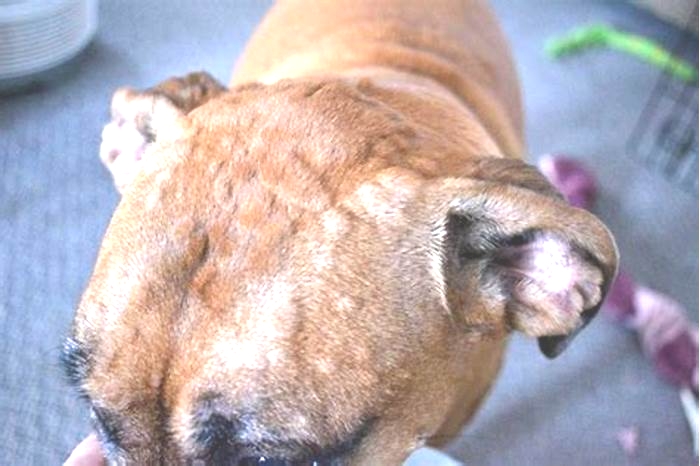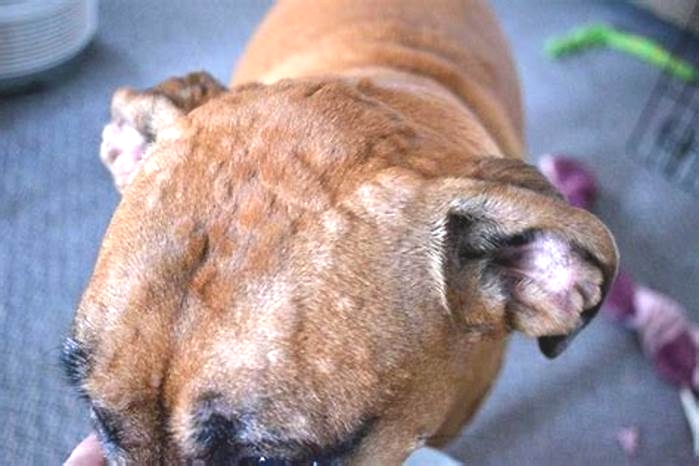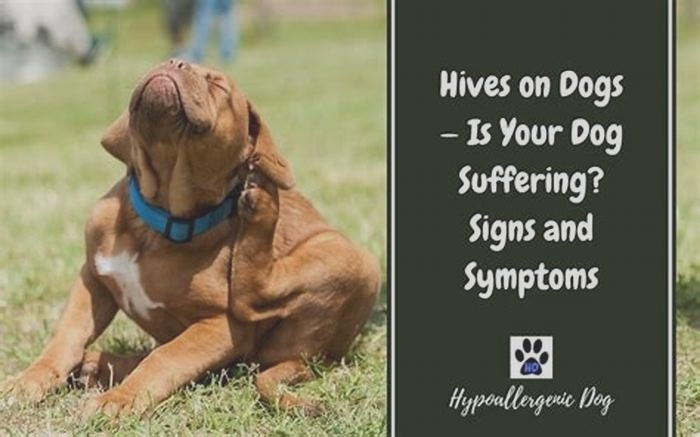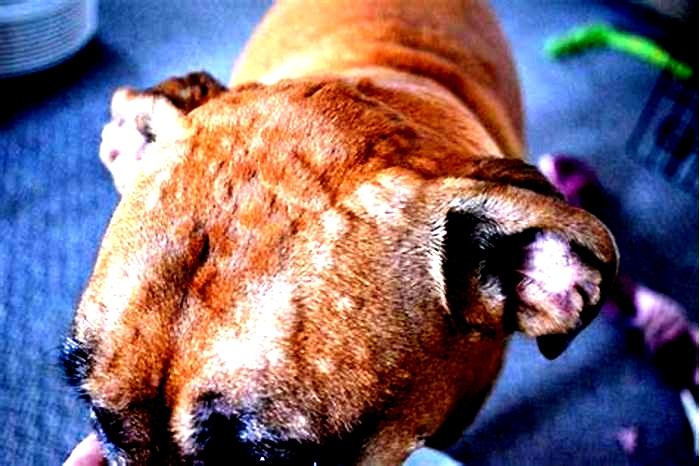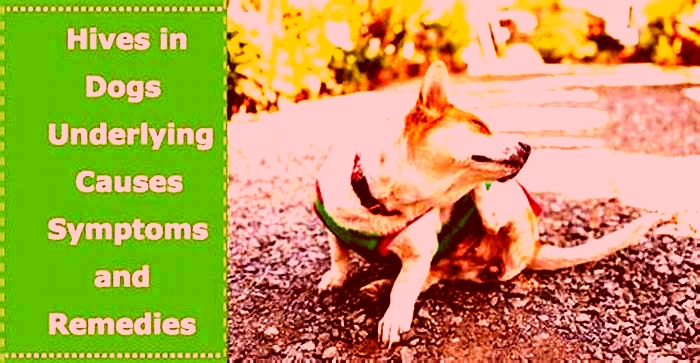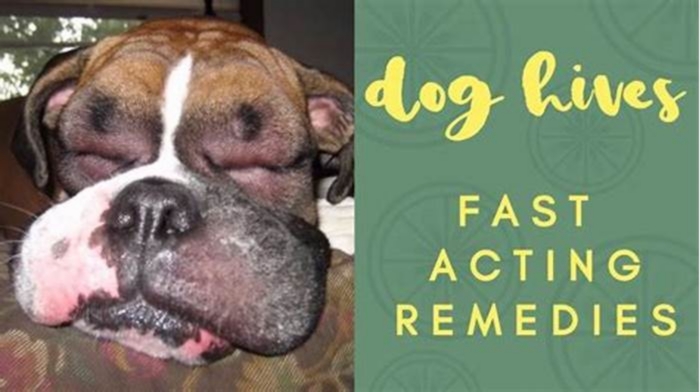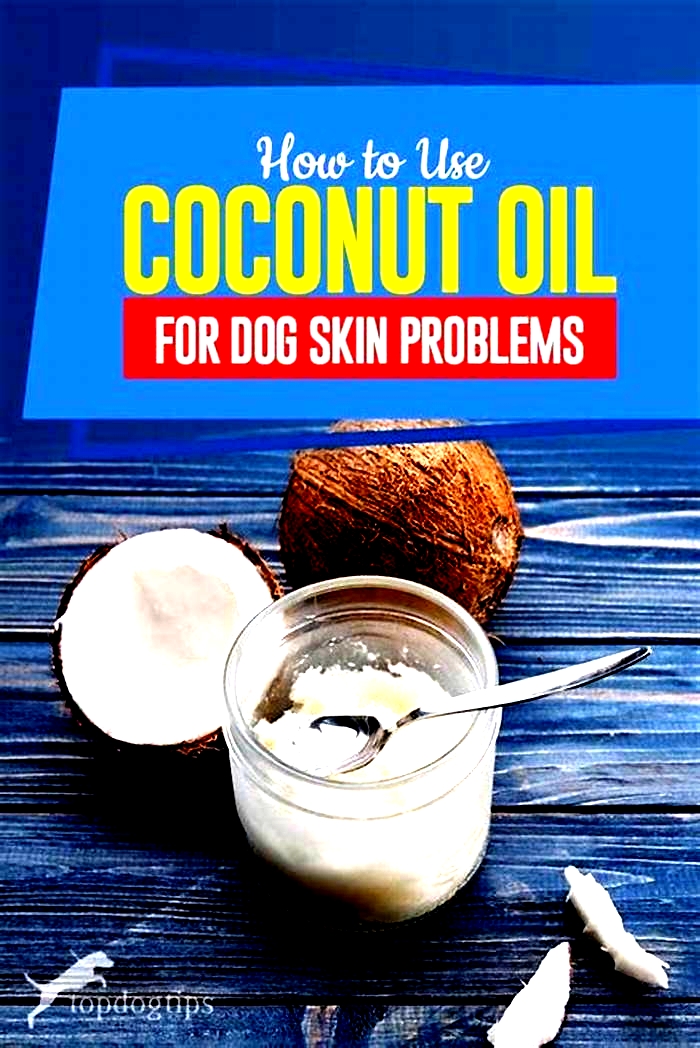What is the best remedy for dog hives
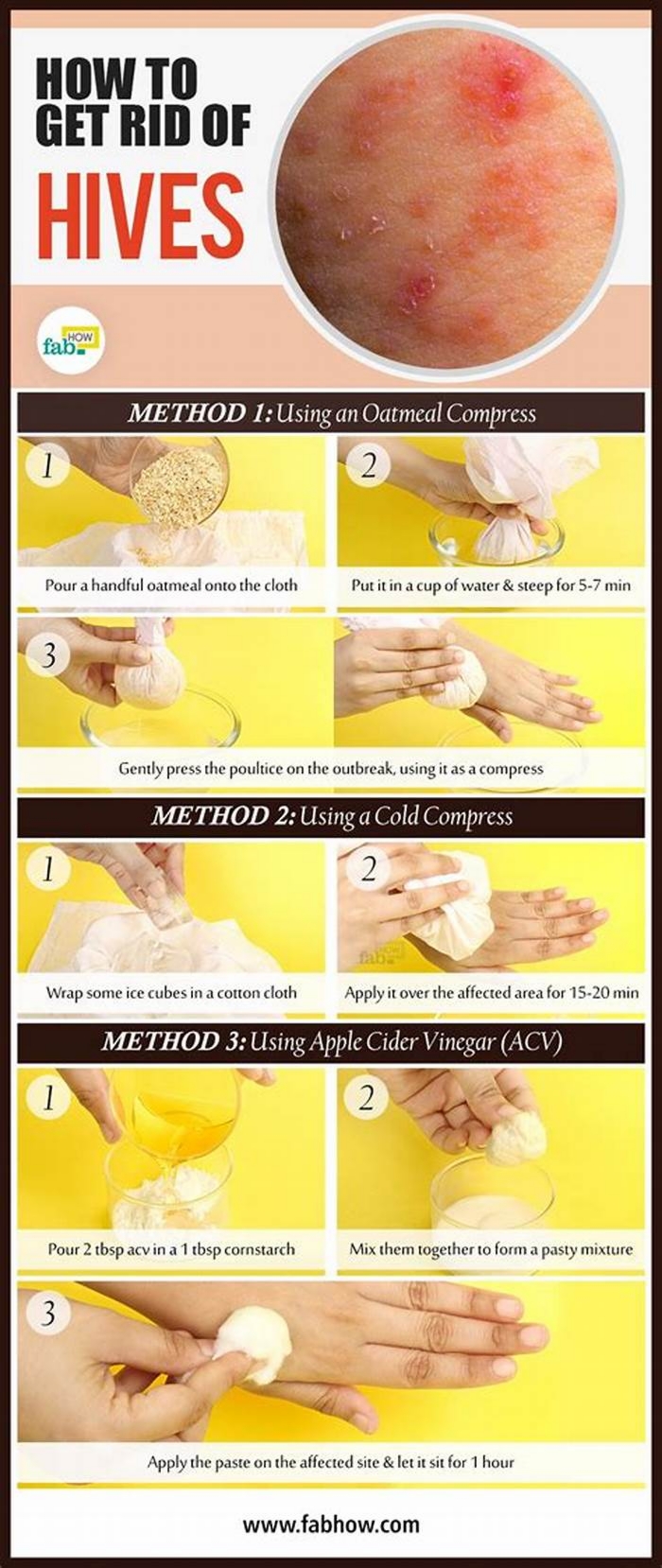
The Best Natural Dog Hives Remedies [Vet Approved Remedy Guide]
Your dog is constantly scratching and chewing itself and doesnt stop. Something is not right. If your dog is displaying these behaviors, take a closer look. You may see redness and irritation of the skin. The first step is to take your dog to a vet to find out what is causing this discomfort. Your dog may be experiencing hives, a manifestation of allergic reactions. The vet might prescribe medication to address the issue, but what's available if you are looking for a natural dog hives remedy?
What Are Dog Hives?
Urticaria, or hives, is a skin condition that is generally characterized by red welts on dogs (sometimes called "welps" on dogs) anywhere on the body, including the face, mouth, eyes, legs, throat, and ears.
Symptoms of dog hives may include:
- Redness and swelling on face and/or other parts of the body
- Itchiness/excessive scratching
- Drooling due to swollen lips
- Closed eyes due to swollen, itchy eyes
- Swelling in the throat (can result in anaphylaxis, an emergency situation!)

Why Do Dogs Break Out In Hives?
Dog hives are most commonly caused by an allergic reaction. Allergic reactions are immune responses to specific allergens. An immune response involves the production of antibodies, which release chemicals that cause inflammation. The swollen red spots that you see are a direct result of this inflammation. Hives can be triggered by several allergens, which means that there is not just one cause of hives.
Common causes Of hives:
- Insect bites or stings
- Medications
- Vaccinations
- Plants, such as poison ivy or oak
If you have a dog who gets hives, it's good to know what exactly triggers the reaction. Once the culprit is identified you can stop your dog from getting hives, if you keep it away from what it's allergic to. No trigger equals no reaction.
How Long Do Dog Hives Last?
Dog hives typically last from 1-3 days. Since an allergic reaction causes hives, the welts should disappear once the allergen has moved through your dog's body. It's even possible for hives to disappear without treatment in a matter of minutes. If your furry friend experiences a particularly strong allergic reaction, various medications can help the dog recover.
While allergies can differ for each dog, some canines' reactions may get worse over time. In these scenarios, it's important to remember that a medication like an EpiPen does not always cure an allergic reaction. It may ease your pet's symptoms for a few hours before the hives return.
Severe cases of hives need professional medical attention, so think of the EpiPen as a pressing pause on the dog's allergic reaction. This will give you time to take your pet to the emergency room.
If your dog breaks out in hives, pay attention to the symptoms more than how long they last. A mild case of hives lasting more than three days is cause for concern, but severe reactions should immediately receive veterinary attention. How do you know if a reaction is severe? If your dog's face swells or they experience breathing difficulties, it's time to see the vet.
Common Treatment Options For Hives
Fortunately, there are several treatment options for canine hives. We hope that a case of hives resolves itself within just a few minutes, but these medications can help your dog recover if the problem persists:
- Antihistamines
- Corticosteroids
- Epinephrine (EpiPen)
Antihistamines
Antihistamines like Benadryl or Claritin work by inhibiting the further activity of histamines in the immune response. Histamines cause all the general symptoms of allergies that you are familiar with (red eyes, itchy skin, wheezing). By blocking these histamines from binding to their respective receptors, hive symptoms are temporarily relieved. However, there are some side effects that can come with antihistamines.
Possible antihistamine side effects in dogs:
- Drowsiness
- Lethargy
- Nausea
- Diarrhea
- Anxiety or nervousness
Corticosteroids
Corticosteroids (e.g. prednisone, dexamethasone) suppress the inflammatory response. This is important because inflammation is a key part of the immune response. It is responsible for causing the redness and swelling of hives. Corticosteroids work by reducing inflammation and swelling.
Possible short-term side effects of corticosteroids in dogs may include:
- Frequent urination
- Increase in thirst/dehydration
- Lethargy
- Higher risk of infection getting worse
- Nausea/vomiting
Potential long-term side effects of corticosteroids in dogs:
- Urinary tract infection
- Thin skin, blackheads, poor coat
- Decreases wound healing
- Obesity from increasing hunger
- Muscle weakness
- Calcinosis Cutis (hard areas of the skin)
- Increases risk of bacterial infections/fungal infections
- Development of mange (skin mites)
- Predisposition for diabetes

Epinephrine
In rare cases, the throat can become so inflamed and swollen that it actually closes. This is called anaphylaxis, and it is a life-threatening situation that only a burst of epinephrine can resolve. Epinephrine stimulates dilation of the airways, allowing air to pass through. This is usually provided in the form of an EpiPen, which contains epinephrine that has been pre-dosed for your dog.
While epinephrine can be a life-saving drug, there are possible side effects:
- Raised blood pressure
- Anxiety
- Tremors
- Excitability
- Vomiting
- Abnormal heart rhythms
Best Natural Home Remedies For Dog Hives
If your dog can't seem to stop scratching, there's plenty you can do at home. Mother Nature gives us plenty of natural remedies that can help our pets cope with hives. Try some of our following tips if your dog has mild symptoms of hives:
Oats
Oats have soothing properties and can alleviate itching when applied to the skin. The best way to use oats is to make oat paste by cooking the oatmeal and letting it cool. Once cooled, apply the paste to your dog's skin. You can also make an oat bath for your dog if there is a lot of itching.
Chamomile and Green Tea
These herbal teas have skin-soothing and cooling properties. They are best for itchy, irritated skin. You can either make a chamomile or green tea bath for your dog or drip the tea over the irritated areas.
Apple Cider Vinegar And Water Spray
An equal mixture of apple cider vinegar and water can do the trick. Apple cider vinegar has antiseptic and anti-fungal properties, making it effective for irritation from poison oak. Be sure not to use this on any broken skin, as the vinegar will cause great irritation and possibly worsen the situation.
Coconut Oil
Coconut oil contains anti-fungal and antibacterial properties that help treat irritated skin while keeping the skin nourished. Apply solid coconut oil directly onto your dogs skin to reduce irritation and dryness.
Using CBD Oil To Treat Dog Hives
If the remedies mentioned above aren't doing the trick, try our premium CBD oil drop may be able to offer your dog some relief. Let's take a look at what CBD actually is, and what it may do.
To begin with, we must know that CBD is not yet approved or meant to prevent, treat, or cure any ailments or diseases.We do know, however, that it interacts with the endocannabinoid system (ECS). Dogs, like humans, have an ECS that interacts with cannabinoids. You can use CBD dog treats, CBD capsules, CBD topicals, or CBD oilto administer CBD to your dog.

The ECS is responsible for regulating several key functions of the body. One of the most notable functions is the regulation of the immune system. Dogs with hives usually show symptoms of irritation, swelling, and inflammation. Fortunately, the ECS may help to reduce this inflammation by suppressing the inflammatory response. CBD may be helpful for:
- Soothing the skin
- Promoting a calm state
- Promoting a healthy coat

Dosing Suggestions
CBD dosing depends on your dog's weight and whether you're aiming for a starting, regular, or strong dose. We'll go over each of our CBD oil sizes' dosing suggestions, but keep in mind that these dosages are only meant for HolistaPet products. Other brands may have different dosing suggestions based on their CBD formulas.
For dogs that weigh up to 20 lbs, we recommend our 150 mg bottle of CBD oil:
- Starting dose: 0.25 ml (2.5 mg CBD)
- Regular dose: 0.5 ml (5 mg)
- Strong dose: 1 ml (10 mg)
For dogs that weigh between 20-60 lbs, we recommend our 300 mg bottle of CBD oil:
- Starting: 0.25 ml (5 mg)
- Regular: 0.5 ml (10 mg)
- Strong: 1 ml (20 mg)
Larger dogs that weigh 60-100 lbs would benefit most from our 600 mg CBD oil:
- Starting: 0.5 ml (10 mg)
- Regular: 1 ml (20 mg)
- Strong: 2 ml (40 mg)
If you've got a pooch that weighs between 100-160 lbs, you've got two excellent CBD oil size options. Our 1200 mg bottle is perfect for daily wellness benefit:
- Starting: 0.5 ml (20 mg)
- Regular: 1 ml (40 mg)
- Strong: 2 ml (80 mg)

If your dog is on the heavier side or experiencing skin irritation, you may want something a bit stronger. In that case, consider our 3000 mg bottle:
- Regular: 1.5 ml (100 mg)
- Strong: 2 ml (200 mg)
If you're wondering what the heck a milliliter looks like, there's no need to bust out your lab equipment. We have clearly labeled milliliter markers on our CBD oil dropper so that you never have to guess. This helps you give the right dosage to your furry friend every time!
Is CBD Safe For Dogs?
CBD is generally safe for your dog. It is non-intoxicating, so it most certainly will not get your dog high. CBD comes from the hemp plant, which naturally contains a high CBD to THC ratio. Many CBD products contain zero THC, which can be ideal for your dog.
In addition, CBD has minimal side effects that will most likely not be problematic for your dog. These side effects may include:
- Dry mouth: CBD may affect saliva production, resulting in a dry mouth and a sensation of thirst.
- Lowered blood pressure: CBD in high doses may cause a small drop in blood pressure, along with slight light-headedness.
- Drowsiness: CBD promotes relaxation, in high doses, it may cause drowsiness.
That being said, the adverse effects that may occur are a result of drug interactions. Therefore, it is always best to consult your vet before using CBD for your dog.
Final Thoughts - The Best Natural Dog Hives Remedies
If your dog has allergies, be sure to consult a vet about hive prevention. If you're unsure whether your dog has allergies, there are several at-home test kits available. When your pooch can't seem to stop scratching themselves, there are several home remedies you can try that may soothe their skin.
If the scratching turns out to be hives, monitor your pet carefully. Hopefully, the swelling does not reach their face or airways, and the hives go away within three days. If so, help your dog cope with the symptoms using some of our tips. Although CBD is not an approved or regulated drug, it may help promote a soothing and calming effect for your dog. Should the hives become severe, take your pet to the hospital. More information.
Dog Hives
What Are Dog Hives?
Hives (also referred to as urticaria) are areas of the skin that appear reddened and raised. Just as with humans, hives can be very itchy for your dog. Theyre a sign that an allergy is causing the immune system to overreact.
Hives can appear very quicklyand disappear just as quickly. The raised red area of the skin is referred to as a wheal, and it can appear anywhere from a few minutes to hours after exposure to an allergen. Wheals can appear anywhere on your dogs body, but theyre usually found on the head, neck, back, stomach, and legs.
In mild cases, the hives will generally disappear within 12-48 hours after contact with the allergen. However, because of the risk that the reaction can worsen to dangerous swelling of your dogs airways or a serious allergic reaction called anaphylaxis, you should seek out treatment any time you see hives on your dog. This is especially true for hives that occur on the face or around the throat, which can lead to dangerous swelling and possible blockage of the airways.
Symptoms of Dog Hives
Red raised areas of skin called wheals, which can occur anywhere (including mucous membranes) but are most commonly seen on the head, neck, back, abdomen, and legs
Intense itching
Excessive drooling if the mouth is swollen
Swelling (angioedema), which is particularly concerning when it involves the face and respiratory system and can have severe and life-threatening consequences
Causes of Dog Hives
The allergen that causes the hives may be environmental, chemical, or dietary. Any allergen your dog is sensitive can also lead to hives. Common causes include:
Insects bites, chemical contact, and medications are the most common.
How Vets Diagnose Hives
Your vet will closely examine your dog to locate the distinctive wheals associated with hives. Wheals typically have hair on them, and may appear in clusters. Beyond the physical examination, other parts of the diagnosis include:
Any history you are able to provide; be as thorough as you can in describing allergens your dog might have come into contact with and when and where you first saw the hives
Your dogs response to treatment
Treatment for Dog Hives
Dogs with hives usually respond quickly to treatment, which may include:
At-home treatments may include:
Cold compresses over the hives or swollen areas to give relief from itching
Antihistamines, but only under the supervision of your vet
Management of Dog Hives
Work with your vet to determine the cause of the hives, using both your dogs health history and history of exposure to allergens. Depending on the cause and the frequency, your vet may recommend:
Allergy testing to confirm environmental allergens
Immunotherapy treatment to desensitize your dog to specific allergens
A food trial to find ingredients that cause a reaction and develop specific dietary recommendations
Dog Hives FAQs
Are dog hives an emergency?
Yes. Hives indicate an allergic reaction within the body. Although the hives themselves are mostly just uncomfortable, they could lead to very dangerous complications, including anaphylaxis and death. Its best to treat even mild cases of hives.
What can I give my dog for hives?
It is important to speak to your veterinarian before giving your dog any medication. The vet may recommend certain medications to give your dog now or to have ready for future episodes.
How long do hives last?
Hives can disappear within a few hours or last up to 48 hours.
Can anxiety cause hives in dogs?
Theres a small chance that psychological stress can cause dog hives, but generally, anxiety merely worsens hives that are already present.
Should I take my dog to the vet for hives?
Yes, hives indicate a larger issuean allergic reactionand require treatment to make your dog comfortable and keep the reaction from progressing.
What do hives look like on a dog?
Hives are red, often swollen areas of skin that may be very itchy. They can be anywhere on the body, but youll often spot them on your dogs head, neck, back, stomach, or legs.
What foods cause hives in dogs?
There is no one food that generally causes hives in dogs. However, if your dog is allergic to a particular food or ingredient, that can cause hives for your individual dog.

